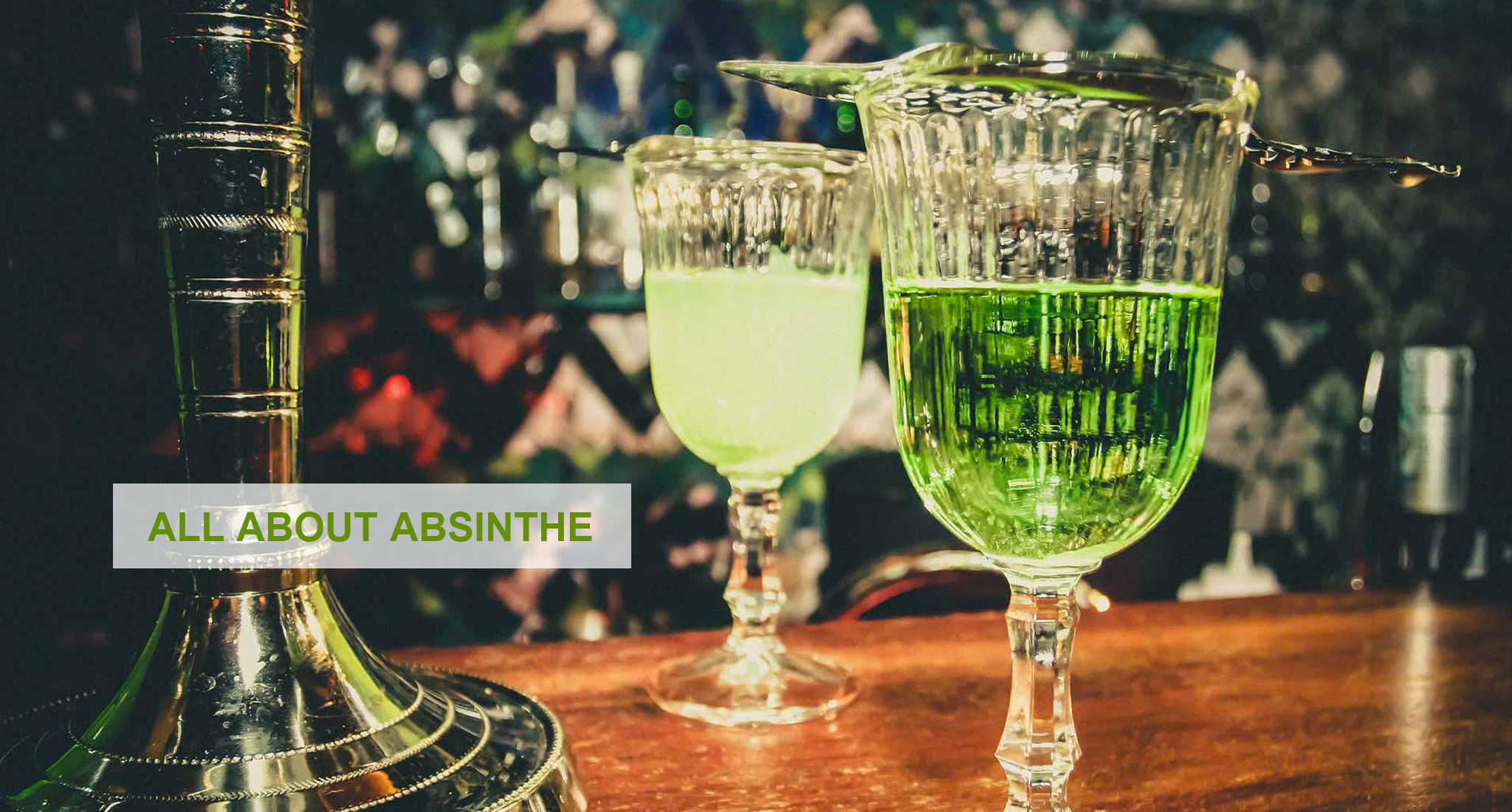Have you ever heard of absinthe? If you’ve ever done a little digging into the world of unique alcoholic beverages, chances are good you’ve come across the term somewhere along the way. Even so, however, you may not be fully aware of what this bizarre liquor really is, where it comes from, or what it is used for today. Below, we’ll give you a rundown of the history of absinthe as well as the ways it’s still in use in a modern world. We’ll also introduce you to some of the unique stories that go along with the use of absinthe throughout the centuries. Read on to learn more.
What is Absinthe?
Absinthe is a very alcoholic drink that usually comes in at somewhere between 90 and 150 proof, depending on the label. It is a distilled beverage that is flavored like anise, which tastes a lot like licorice to many people. It’s made from botanicals, the same way as gin is, including anise, wormwood, and fennel. The wormwood ingredient is the one that gives absinthe its unique properties and has contributed to many of the stories surrounding this drink throughout the years.
Absinthe can be clear in some instances, but it’s almost always vivid green, which is its natural state without any additives. This unique green color makes the drink even more enticing than it already is and is the root of its nickname as “the green fairy.” The name “Absinthe” comes from the Latin name for the wormwood plant: Artemisia absinthium.
The History of Absinthe
Absinthe is a very ancient liquor with a past that can be traced all the way back to ancient Egypt. Although the ancient Egyptians made an alcoholic drink out of wormwood, it wasn’t quite the same as absinthe, but it provided the groundwork for the creation of this liquor some centuries later.
We do not have any written evidence of absinthe as it is today until the 1700s, and even so, we don’t know exactly who invented the drink or where it first came from. Popular legend states that it was originally put together by a French doctor who used it for medical treatments and taught the recipe to others who wanted to use it for the same purpose. Eventually, however, it caught on for recreational purposes, and the first absinthe distillery was made near the turn of the century. This distillery spawned a secondary location which continued to be the most popular provider of absinthe through the 1800s and into the beginning of the 1900s.
The liquor was used for some time as a means to prevent malaria in soldiers, but this treatment in turn caused the soldiers to get a bit hooked on the absinthe instead. This was one of the many reasons why this beverage took off in popularity throughout the 1800s. Soon, it became fashionable to have absinthe at 5pm daily, particularly in France, where its popularity soared.
Due to the popularity of absinthe in France, it also took off in New Orleans, which was settled by the French. New Orleans created the Sazerac, which is the most well-known and widely-enjoyed absinthe cocktail, and the city’s modern-day culture is still heavily influenced by the enjoyment of absinthe.
In the 1900s, a series of various, unrelated crimes broke out, many of which were attributed to the consumption of absinthe beforehand. News of this soon became widespread, and absinthe was blamed—more or less erroneously—as the cause of this violent behavior.
Absinthe has also been widely associated with hallucinations, although this is not exactly accurate, either. Many writers and notable figures throughout the ages have named absinthe, specifically the chemical compound thujone which is present in absinthe, as the cause of their hallucinations and mental illnesses. However, this has been widely disproven. Even the most well-known proponent of hallucinogenic absinthe experiences, Vincent Van Gogh, is now understood as having experienced mental illness in his lifetime rather than hallucinations from his beverage of choice.
Many studies have been conducted to prove whether or not absinthe is really more dangerous than any other type of alcohol. For the most part, today, it is believed that absinthe is only dangerous because it has such a high alcohol content, and not because of any other properties it may have been rumored to hold. In fact, studies have shown that you would have to drink half a liter of absinthe to have any hallucinogenic effects of the thujone, but this is a near-fatal volume of alcohol.
Absinthe today
Today, absinthe is not banned in nearly as many locations as it once was. Since 2007, it has been legal in the United States once again, with some regulations in place. Simply put, the absinthe sold in the US must not contain any thujone and cannot be packaged or sold as a hallucinogenic (even through use of graphics or advertising). It also cannot be simply called “Absinthe” and must have a brand name to go along with it on the label.
Although absinthe continues to be a mysterious beverage that draws the attention of those looking for a unique experience, it’s really just a powerful liquor that tastes great in a Sazerac. Whether you’re in New Orleans or just want to try it at home for yourself, you may want to pick up a bottle next time you’re at your local liquor store.
Do you feel confident in your ability to handle absinthe? If you do, keep in mind that there are still a few varieties available on the shelves in US liquor stores. Of course, they aren’t quite the same as they once were a long time ago, but they can still give you the intense enjoyment that made absinthe so popular in the first place. And don’t worry—you’re not likely to experience hallucinations as long as you enjoy your absinthe responsibly. It is a very powerful alcoholic beverage, so ease into it when you try it and you won’t have any issues.
